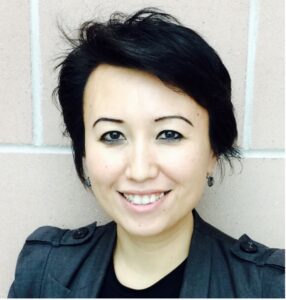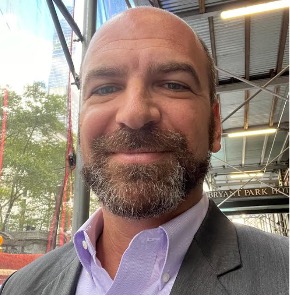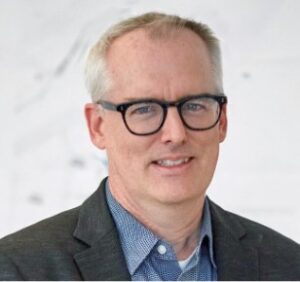Top Story
ULI Celebrates Women’s History Month
Find out more.
March 7, 2023
March 30, 2023
9:00 a.m. – 10:30 a.m. EST
Register today to learn from global experts on how to bring nature back to the city, deliver parks, green streets, flood protection/stormwater management, utilities, and environmental restoration in one project.
Austin’s Waterloo Greenway project is part of a nationwide coalition called the “Alliance of Infrastructure Reuse and Development” joined to support one another in the challenging transformation of urban districts by reimagining local blighted infrastructure. A small meandering creek that once defined the boundary of the original Austin Street Grid plan, named after the plan’s author Edwin Waller, has been completely engulfed in the city’s explosive growth. After 100 years of incremental degradation by adjacent landowners and the absence of a public maintenance regime, Waller Creek has experienced considerable erosion, slope failures and the loss of most of its native habitat, all of which aggravate the effects of regular flooding. The notoriety of the creek’s “dangerous” qualities and the construction of an adjacent elevated highway has deepened the divide between East Austin’s Mexican-American community and the predominately white communities of Central Business District downtown.
Between 2011 and 2018, the city of Austin built a mile-long bypass tunnel beneath Waller Creek to remove 28 acres of downtown from the floodplain, enabling significant redevelopment. The tunnel was funded through a TIF (tax increment financing) mechanism which leveed a water utility tax for the surrounding development district. As the tunnel neared completion, The Waterloo Greenway project was integrated into the city’s hard infrastructure work, and the TIF program was extended to support further improvements to the tunnel watershed. The Waterloo Greenway is rebuilding the ecology of the creek while radically expanding access to immersive nature at the center of millions of square feet of new development while reconnecting neighborhoods, business corridors, and mobility networks along the east side of downtown. As a public-private partnership, the Greenway has the potential to catalyze $2 billion in real estate value over 20 years and $500 million in enhanced value to existing real estate development. The first phase of the project was completed in 2021 with Waterloo Park. The success of the tunnel and Park has recently prompted the U.S. Army Corps of Engineers to invest $12 million in federal funding and recognize the environmental infrastructure project as the first of its kind to be approved in Texas.
In conjunction with the ‘Nature in a City’ theme in Singapore, Jurong Lakeside Garden is Singapore’s first national gardens in the heartlands, and strives to inspire people through nature, learn through nature and bring people close to nature.
The garden utilizes biophilic design to knit nature back into the landscape. With its nature being a redevelopment project, existing conditions, existing habitat hotpots and existing resources on site are carefully respected and analyzed. They then contribute back to the final design in various means by retaining, relocating, recycling and repurposing. The challenge of such big construction within a habitat zone has been successfully overcome by appropriate mitigation measures and environmentally sensitive construction methodologies. Jurong Lakeside Garden started as a freshwater swamp back in the old days, and returned as a freshwater swamp in an ecological and a design philosophical way.
Yvonne Yeung
Yvonne Yeung
CEO, SDG Strategies
ULI Curtis Infrastructure Fellow

Yvonne Yeung is the CEO of SDG Strategies, a global consultancy based in Canada, with over 23 years of public and private sector experience delivering high-quality, award-winning, sustainable transit-oriented communities and vibrant public spaces worldwide. Her work focuses on informing how cities can unlock the value of infrastructure to deliver healthy, equitable, climate-ready walkable neighbourhood through synergistic collaboration as a blueprint. Appointed as ULI Curtis Infrastructure Fellow, Vice-chair of the ULI SDRC Product Council, member of ULI Infrastructure Forum Leadership, ULI Toronto Advisory Board and ULI WLI Women’s Leadership Initiative Champions, Yvonne authors ULI Infrastructure Leadership research publication and founded the “ULI Getting to Transit Oriented Communities Initiative,” leading strategic collaborations across global cities, promoting progressive city-building practices and collaborations between public and private sectors.
Specialized in team building, executive strategy, large-scale transformation and cross-sector implementation, Yvonne is the recipient of the University of Toronto Rotman School of Management MBA Award, and the American Society of Landscape Architects Honour Award. As an urban designer, planner, landscape architect, and sustainable neighbourhood development accredited professional, Yvonne has developed urban design implementation frameworks for Age-Friendly and Cognitive-Friendly Communities, Urban Mixed-use School Community Hubs, Digital Smart-City Integration, Strategic Partnerships for Community Infrastructure Integration in High-Density Neighbourhoods, Public Realm Strategy and Transit-oriented Communities Urban Design Implementation Framework. Her participatory-design work was profiled at the Design Exchange in Toronto and further evolved into an award-winning interdisciplinary tool for cross-sector development of precinct plans to unlock TOCs. Her projects have won planning and design excellence awards from the Waterfront Centre in Washington DC, the International Grands Prix Du Design, the Canadian Institute of Planners, the Canadian Society of Landscape Architects, the Ontario Professional Planners Institute and the City of Toronto Urban Design.
Matthew Kwatinetz
Director, NYU Urban Lab

Professor Kwatinetz is the Director of the NYU Urban Lab, where he is also a professor of real estate economics and inclusive economic development. He recently published NYC’s Affordable Housing Crisis in partnership with the AIA-NY and Center for Architecture. He is the founder of the advisory and impact investment firm Q Partners (“Q”). Previously, Kwatinetz was an Executive Vice President for NYC Economic Development Corporation, where he managed their 65M+ real estate portfolio. For EDC, Kwatinetz also ran PortNYC, the third largest US port, including the management of the negotiations, start-up and operations of the $600M+ NYC Ferry, the largest expansion of ferry service in US history. He served as the lead on NYC Mayor de Blasio’s Affordable Real Estate for Artists (AREA) program. As Q, Kwatinetz worked with Austin Mayor Steve Adler to create the Austin Economic Development Corporation. Q worked directly with Mayor Copenhaver of Augusta to found Augusta Regional Collaboration Project, a Georgia public development corporation. Other selected Q clients: the U.S. Department of Energy, NYC Department of Education, Real Capital Analytics, and the City of Shoreline. Kwatinetz is a former economic consultant for Penn Institute for Urban Research under Dr. Susan Wachter. Kwatinetz is the former VP of Economics and Finance at Kinzer Real Estate, supporting the University of Washington, Alaska Airlines and Starbucks Corporation. In 2018, he published Thriving In Place: Supporting Austin’s Cultural Vitality Through Place-Based Economic Development, sponsored by the NEA and City of Austin. Kwatinetz sits on the Urban Land Institute’s National Public/Private Partnership Council and is on the leadership team of ULI’s Curtis Infrastructure Forum. While in Seattle, Kwatinetz was named a Seattle City Artist and was then asked by Mayor Nickels to serve as the founding Vice President of the Capitol Hill Chamber of Commerce, he also co-founded the Seattle Cultural Overlay District Advisory Committee, and sat on King County’s Cultural Real Estate Task Force. He previously was the Chair of ULI-New York’s Technical Assistance Panel (“TAP”) program. He is a graduate of Deep Springs College, Harvard University (BA) and The Wharton School (MBA).
Jelle Therry
Design Director, The Point of the Mountain State Land Authority – Singapore

Jelle Therry is a multidisciplinary landscape architect seeking to raise awareness of the social and ecological value of water in urban design, specializing in the integration of art, urban hydrology, environmental engineering and landscape architecture within an urban context, create sustainable societies where people and nature flourish. Jelle is drawn to projects that responds to the interface between architecture and landscape, respecting the power of each entity to complement and reinforce one another. He has an affinity and deep love for the details of design and believe that careful attention to the details and manipulation of a space’s natural characteristic have the power to transform our everyday lives, grounding us in the restorative powers of place, and affect our motivations and ambitions for a better world.
Prior to joining Henning Larsen, Jelle has over eighteen years of professional experience designing and managing both large and small scale landscape projects around the globe. He has developed and delivered high-profile projects significantly contributing to the public realm from procurement through to implementation.
Gullivar Shepard
Partner, MVVA Michael Van Valkenburgh Associates Inc – New York

Gullivar Shepard is a Partner of Michael Van Valkenburgh Associates, Inc. Landscape Architects. While originally trained as an architect and a cultural anthropologist, he has been a landscape architect for 23 years and has long been a guiding force at MVVA by steering many of the firm’s urban-scale projects. Gullivar has held key leadership roles on large and complex projects where coordination between the natural, infrastructural, and urban context is of primary importance such as the CityArchRiver project in St. Louis, Brooklyn Bridge Park, and the Port Lands Flood Protection and Enabling Infrastructure Project in Toronto.
Gullivar is the lead planner and designer for the Waterloo Greenway in Austin, TX. He is recognized for his skill in navigating programmatic requirements, regulatory and jurisdictional hurdles, and problematic site conditions to create rich public spaces. Gullivar’s interdisciplinary perspective always aims to bridge the technical systems-thinking and the cultural considerations of public space within the design process. His projects and research are a laboratory for innovative building methods, site design, communication tools, engagement, and project management. Gullivar received a Master of Architecture from Harvard University’s Graduate School of Design, where he was awarded the Araldo A. Cossutta Annual Prize for Design Excellence. Since joining the firm in 1999, Gullivar has applied his integrated design approach to challenges such as ecological restoration, flood control, transportation planning, utility planning and choreographing connections between parks and larger forces of urban development.
|
|
|
|
|
Don’t have an account? Sign up for a ULI guest account.